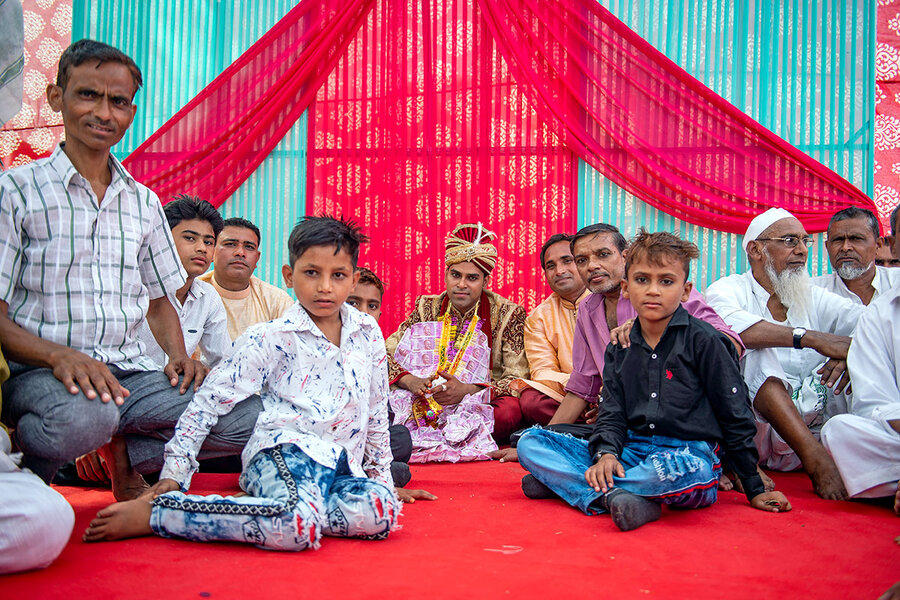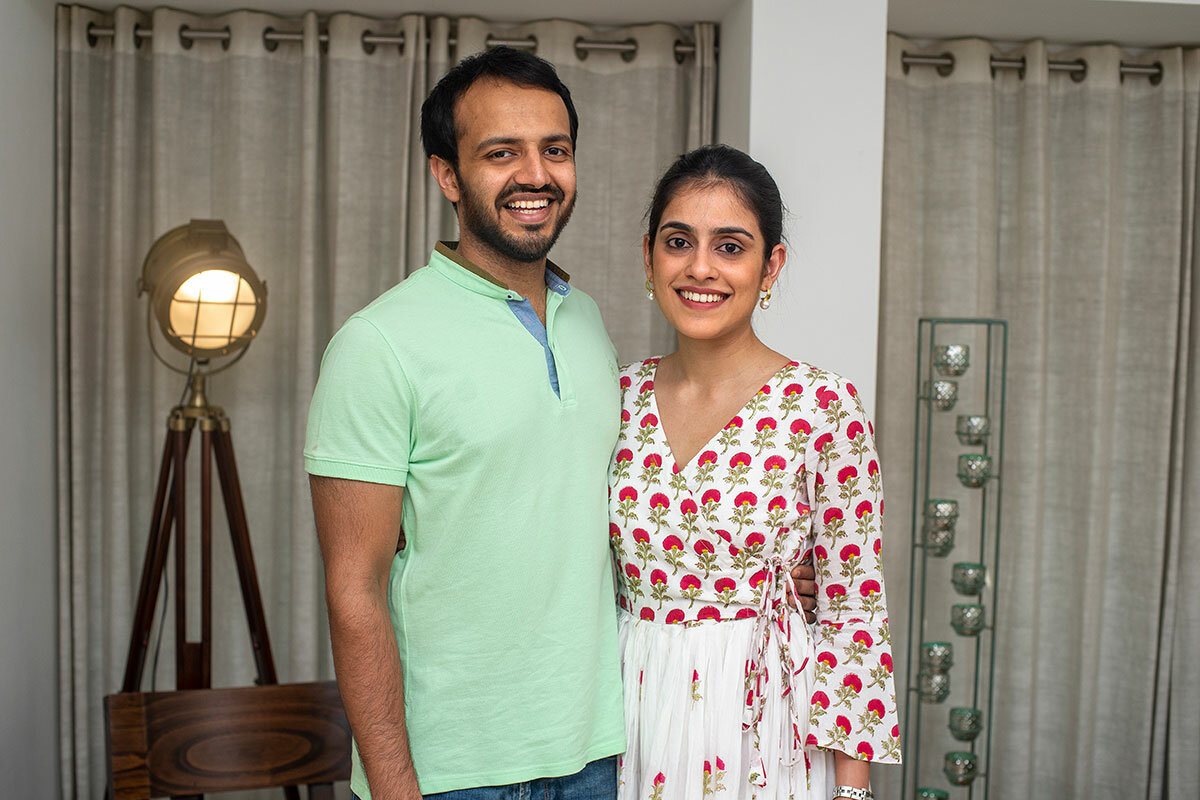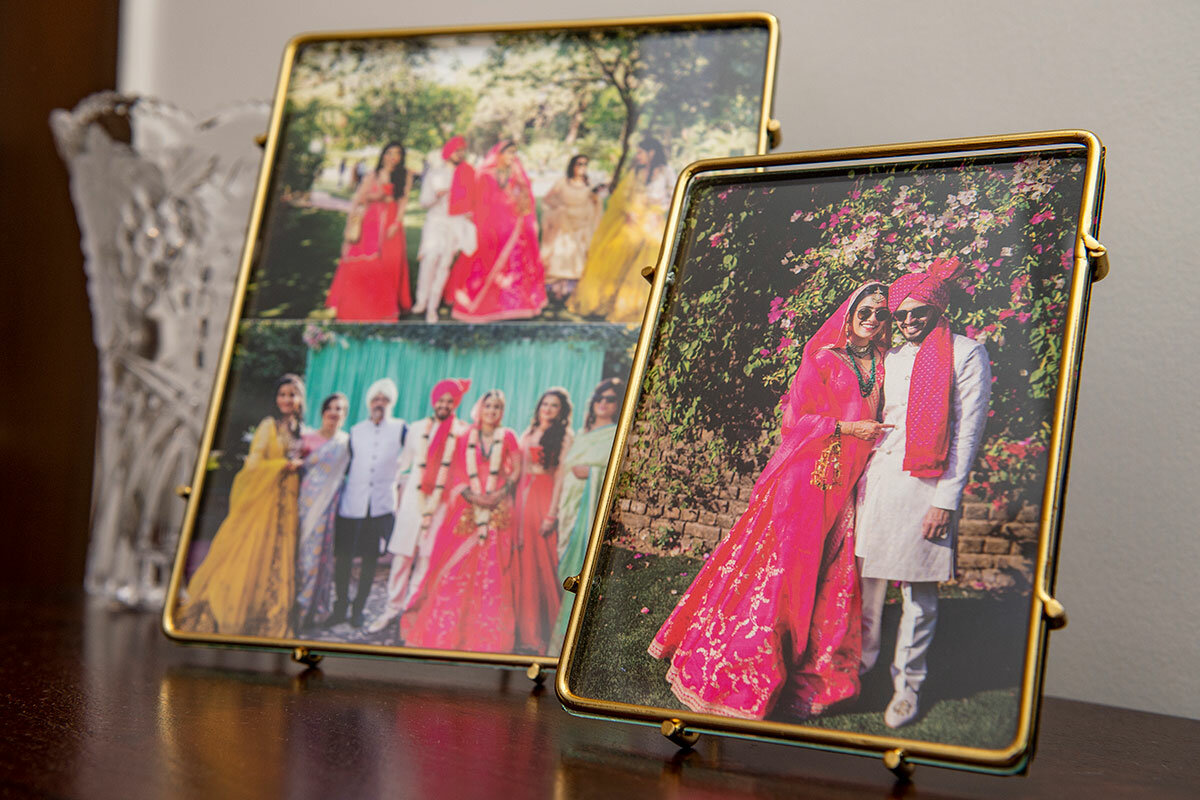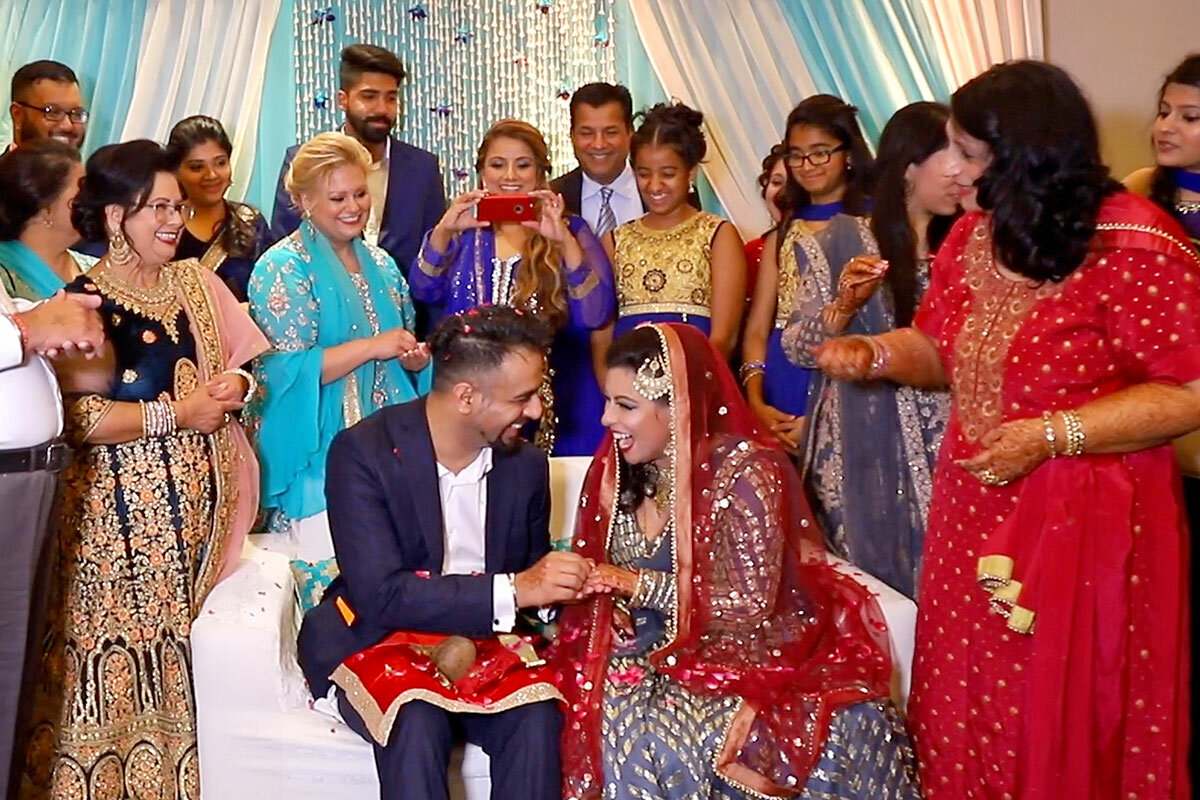Less Bollywood, more us: How India's weddings are changing
Loading...
| New Delhi
That an Amazon TV series featuring two fictional New Delhi wedding planners would take the land of the big fat Indian wedding by storm was a surprise to almost no one, it seems, including Vasundhara Sawhney.
“Have you seen ‘Made in Heaven’? Nothing gives a better picture of the wedding scene in India right now,” says the data technician, who has a startup news and information platform for women.
“It really goes into all the ways that Indian weddings are changing, even with all the traditions we keep,” she says of the series, which takes on everything from dowry conflicts and class to a now-overturned law against gay sex. “I think weddings are a real window into how Indian society and marriage are changing.”
Why We Wrote This
Replete with tradition and ceremony, weddings are a snapshot of what a society values. In India, once-sacrosanct wedding culture is changing, reflecting evolving outlooks on marriage and gender roles.
Ms. Sawhney speaks from experience. Married less than a year, the New Delhi native says she was conscious of her desire to reflect both the old and new Indias in her wedding last December to her now-husband, Chiranjiv Sawhney.
For one thing – and despite her passion for “Made in Heaven” – Ms. Sawhney had no wedding planner to help organize a three-day event with 650 guests (including 80 from outside India). It involved separate ceremonies at temples of her Hindu faith and Mr. Sawhney’s Sikh faith, as well as mehndi (henna painting) and haldi (turmeric-paste bathing) rites. The festivities culminated in a big dinner-dance reception worthy of Bollywood.
She wanted to use the opportunity, with all its joys and stresses, as a kind of dry run of the partnership she and Mr. Sawhney would build together in their marriage.
“I wanted to move away from traditional gender roles – you know, like the woman feeding the man [the cake], and all that – and just like in marriage, I wanted each of us bringing our best to the table and making it work,” she says.
Adds Mr. Sawhney, who works for Apple in India, “The result was that the wedding had a lot of heart, because we both put the best of ourselves into it to make it ‘us’ and make it a success.”
As its middle class grows, its young people become more educated, and its exposure to global trends in thought expands, India is changing. And as Indian society changes, the all-important Indian wedding changes with it, reflecting shifting gender roles, evolving outlooks on money, and new thinking about partnerships and happiness.
To be sure, the wedding remains sacrosanct, a symbol of prosperity and successful parenting. Poor farmers willingly take out a debilitating $100 or $200 loan to marry off a daughter properly and preserve village standing. At the other extreme, India’s new billionaires have been known to spend tens of millions of dollars on the wedding of a child for whom nothing less than Beyonce flown in to wow the guests will do.
Powerful prejudices against interfaith weddings persist, particularly if one partner is Muslim, and more taboo still are marriages that attempt to disregard India’s caste system. The country has been rocked in recent months by cases of fathers resorting to violence – including one who hired assassins to murder his son-in-law, whose only crime was his status as a Dalit, the lowest rung on the caste-system ladder.
And the arranged marriage is alive and well – not to mention child marriages, which, though illegal, remain a scourge in some rural communities where daughters are seen as financial burdens to be married off to older men willing to pay a price.
But couples are increasingly casting aside old strictures that no longer reflect who they are. Nowadays, matchmaking is often a product of an internet hunt. And to some extent, marriage is even shifting from an obligation to a choice, with a very small but growing number of young men and women opting to say “I don’t.”
“The younger generation, the boys and the girls, they are becoming bold and more broad-minded, they want to be happy first, and that is changing the way they do weddings,” says Sunjai Jain, director of the Cottage Craft Emporium in the famed Chandni Chowk market of Old Delhi – a glittering swirl of stores and stalls that draws wedding parties from as far as London, Houston, and Durban, South Africa. The bazaar’s sari shops (the most traditional staffed by men only) offer bridal ensembles from bargain-basement polyester to expensive embroidered silks, while jewelers showcase a blinding array of gold and diamonds.
Mr. Jain still sells the elaborate jewelry that Indian brides are known for – reserving his most expensive pieces for private showings in the homes of Delhi’s upper crust. Indeed, about half of India’s more than 500 tons of annual gold sales occur during the high wedding season that begins in October. But he says tastes are changing and young people are becoming more practical.
“You’re seeing fewer of the really massive and costly weddings, with the young people especially realizing there’s no fun in wasting money just to impress society,” Mr. Jain adds. “These days they’d rather spend the money on themselves in their new married life, maybe on a holiday. ... I think they’re getting more intelligent.”
The new practicality is showing up well before the wedding planning, indeed even as young people go about selecting a life’s mate.
Shalini Madahar’s betrothal to Akshayjit Singh Narula may have been a match made in heaven, but there’s no question that it was first and foremost a match made in cyberspace.
When Ms. Madahar, a southern California native of Indian descent in her early thirties, felt she’d come up empty after years of dating and long-term relationships, it was her mother who suggested she try an Indian matchmaking site.
At first she was horrified. But the more Ms. Madahar thought about it, the more she decided it made sense.
“I’m very much an American, but at the same time the Indian roots are very deep and strong within me,” she says. “I had some concerns about the cultural differences,” she adds, “but I was also attracted to what I’d seen through my parents and grandparents are India’s old-school values, like commitment, which I value.”
So she gave her mother permission to post her profile on a matchmaking site and to begin “shopping,” as Ms. Madahar puts it, for a future son-in-law. “My mom would put different guys in my cart – literally there’s this little cart you drop the ‘possibles’ into – and I’d review them.”
Here’s the made-in-heaven part: Half a world away, Mr. Narula’s mother was on the same site, curating a list of potential brides for her son to review. And about the same time she zeroed in on Shalini, Ms. Madahar's mother, of Corona, California, clicked on Akshayjit with a feeling that he was the one for her daughter.
Shalini and Akshay, as he is known, began an online conversation, and within a few weeks she and her mother would fly to New Delhi to meet him and his family. Everyone hit it off.
In June, Ms. Madahar and her mother were back in New Delhi – this time for an elaborate engagement ceremony and party, complete with choreographed dance routines. The actual wedding will take place in California once Mr. Narula gets a visa to attend his own wedding.
“It’s kind of wild the way it happened, but at the same time it just has felt right since pretty much the beginning,” Ms. Madahar says. “It’s funny, but I think it was when we first came here to meet Akshay, and his whole family was there, and his grandmother said, ‘You know you have to like us too, because we’re all part of the package,’ that I thought, ‘Yeah, this is what I’ve been looking for.’”
Getting married at an elaborate, tradition-filled wedding certainly remains the norm in India – whether the venue is a swank New Delhi hotel or a modest tent planted in a vacant field. But social change, especially in urban India, is slowly opening the door to a once-unthinkable option: remaining unmarried by choice.
“I’m not interested in getting married, really not at all,” says Kaynat Salmani, a New Delhi program organizer for an international nonprofit that works with Rohingya refugees.
A United Nations report issued in June found that fewer than 1% of Indian women ages 45-49 have never been married, yet Ms. Salmani is well aware that a changing India has made it possible for her to even contemplate the choice to remain single. That change is reflected in her own father, she says, a modest auto-rickshaw driver who has raised his eight children in the Muslim faith, and encouraged his daughters to be just as independent as his sons, to get an education and work outside the home.
Mohammed Salmani confirms Kaynat’s description of his open-mindedness. But he says he still believes that marriage should be part of his daughters’ paths, “because it is the best way to live your life and build a family.”
Seated at the reception of a Muslim wedding in his south Delhi neighborhood – plates heaped with biryani and chicken stewed in lentils and bhindi, or okra – Mr. Salmani says he has already experienced the criticism and rejection that can come with bucking cultural norms.
When the Salmanis’ oldest daughter married an Indian American who is Christian, Mr. Salmani’s brothers criticized him for permitting this calamity. “My father cried at the wedding; it broke his heart that no one from his family showed up,” Ms. Salmani says.
Would it also break his heart if a daughter chose to remain single? “He believes so strongly that marriage is a part of life, but he also raised us to think for ourselves and live our own lives,” Ms. Salmani says. “So I think he would understand.”
In any case, these days Mr. Salmani’s heart has been repaired, and then some, by a 3-year-old grandson, Zain, who regularly FaceTimes with his New Delhi family from his home in St. Louis – and reminds Grandpa of the important thing, that a new chapter has been added to the Salmani family story.
Asked about his American grandson, Mr. Salmani’s eyes suddenly sparkle.
“Oh Zain,” he says, raising his right hand to his chest, “He is our heart.”









